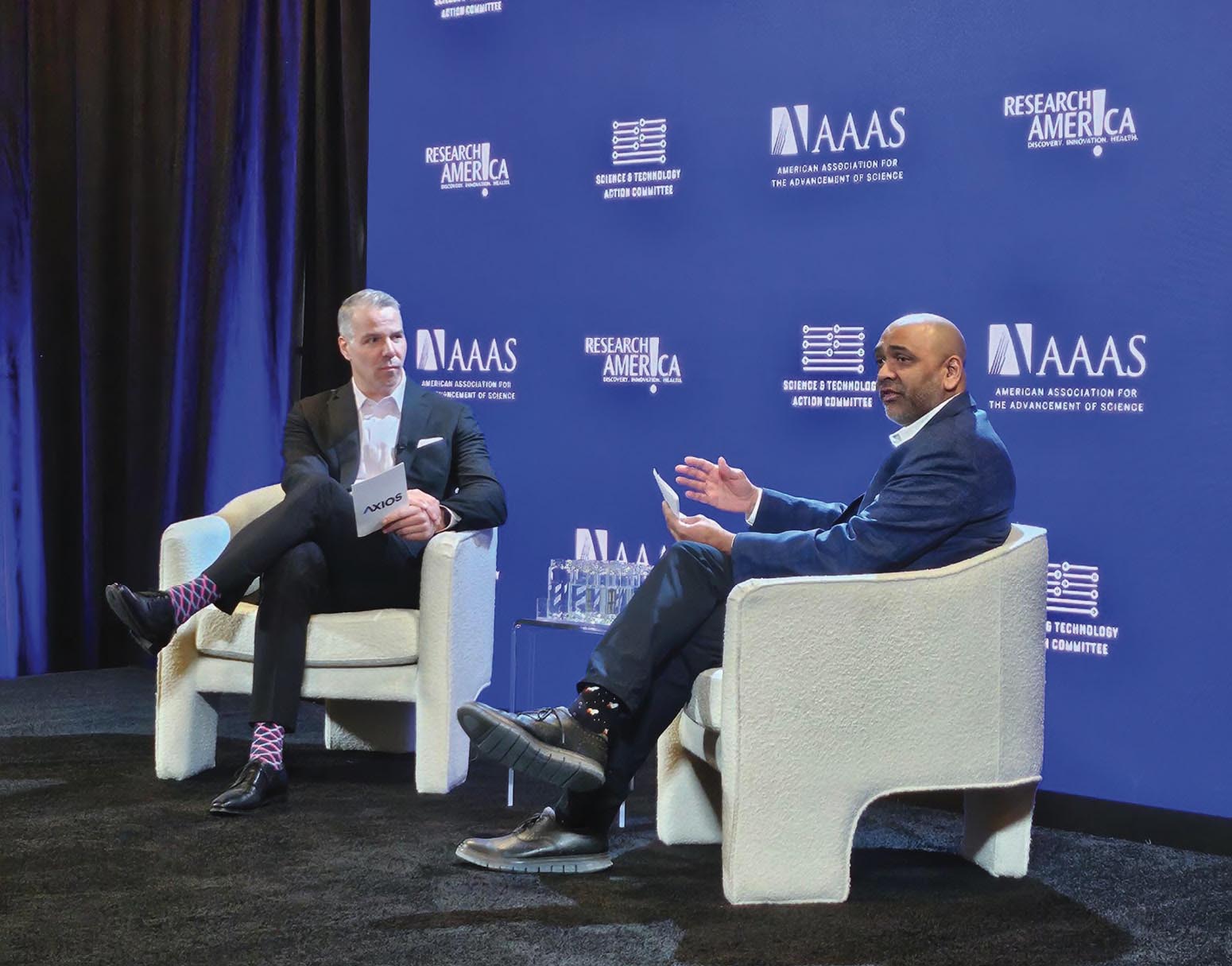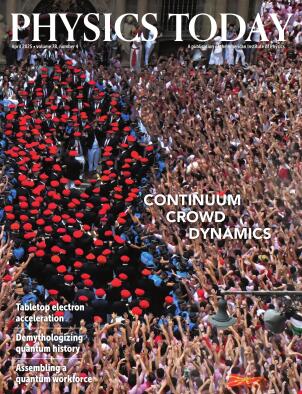US science leaders offer blueprint for maintaining global leadership in STEM
DOI: 10.1063/pt.yizl.wvhf
The US could soon lose its position of global leadership in STEM without urgent action, according to a report released in February by prominent figures in the US science enterprise. The report warns that the country is at risk of falling behind competitors, particularly China, in terms of talent, infrastructure, and capital investment.
The Vision for American Science and Technology (VAST) report represents contributions from the VAST Task Force, comprising more than 70 leaders from nonprofit organizations, government, academia, and industry. (Michael Moloney, CEO of the American Institute of Physics, which publishes Physics Today, is a member of the task force.)
The report calls for increasing public and private investment in science, increasing the involvement of local leaders in regional STEM job creation, reinvigorating K–12 STEM education, strengthening public–private partnerships, attracting and retaining both US- and foreign-born workers, and increasing research security in order to protect scientific discoveries from foreign adversaries.
Among its funding recommendations, the report suggests creating a “recurring national priority-setting process to confirm areas of research that are foundational to national competitiveness and security.” It also proposes “aggressively” increasing spending on AI, materials science, quantum computing, biotechnology, and “technologies for a resilient energy future” as well as using tax credits to incentivize private sector investment.
Sudip Parikh, CEO of the American Association for the Advancement of Science and chair of the VAST Task Force, acknowledged during the February AAAS meeting in Boston that the report comes at a time when many scientists are worried about the future of US science, particularly given recent layoffs at federal science agencies.

Sudip Parikh (right), CEO of the American Association for the Advancement of Science, speaks about the Vision for American Science and Technology report on 25 February. (Photo by Lindsay McKenzie/FYI.)

“There is uncertainty, there is anxiety, and it is rightfully so,” Parikh said during a plenary session on the work of the VAST Task Force. He said that the task force debated how to “react to the current moment” and decided that their report is relevant as it provides a long-term “aspiration for the future that is saying, ‘Here is what we must do.’”
Parikh argued that the US should look to the ambitions for federally funded basic research that emerged in the immediate aftermath of World War II. “We are standing on the shoulders of an 80-year-old vision, which is wonderful and thoughtful and amazing,” he said. “Shouldn’t this generation do something like that?”
The report highlights a proposal, put forward by National Science Board leaders, for the US to pursue an updated version of the National Defense Education Act of 1958 that would boost US STEM education, training, and job opportunities. Via email, Parikh said that the potential for an NDEA 2.0 is still present but that it is “not a one-year discussion.” He added, “We must build momentum, but the building blocks and potential congressional champions are there.”
During an Axios event in late February, Parikh again made the case for the government supporting basic research, stating that developments in fundamental science drive investment from the private sector.
“The United States government invests about $200 billion a year in science and technology. The private sector—industry and philanthropy—invests almost $800 billion a year in science and technology. But the $200 billion in basic research and other investments done by the federal government are critical. They actually enable all the rest of it,” Parikh said. “The more dollars we put in from the feds, the more investment comes in from industry, and we get job growth, we get economic success, and we get national security out of it. What a deal.”
